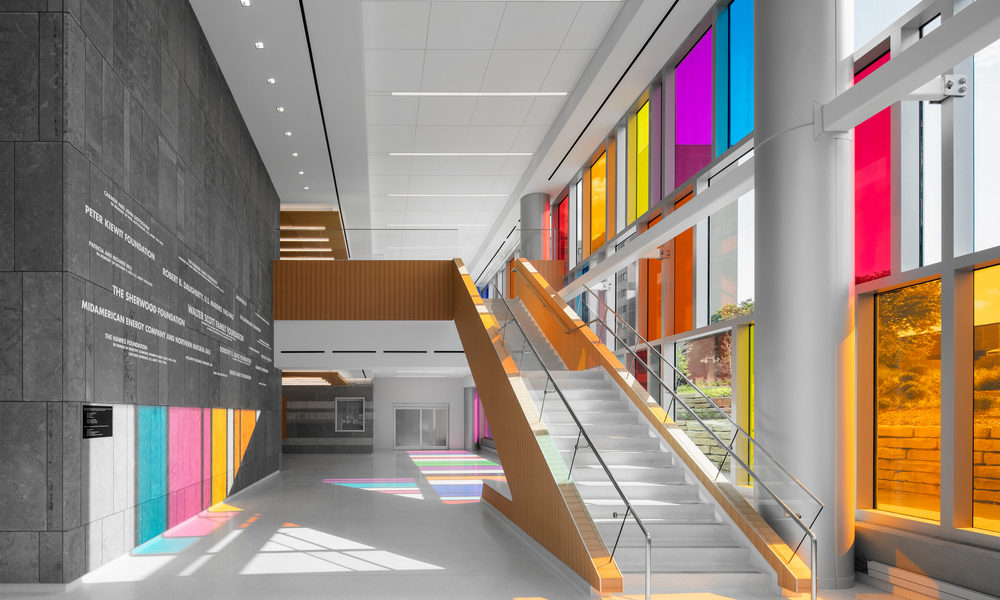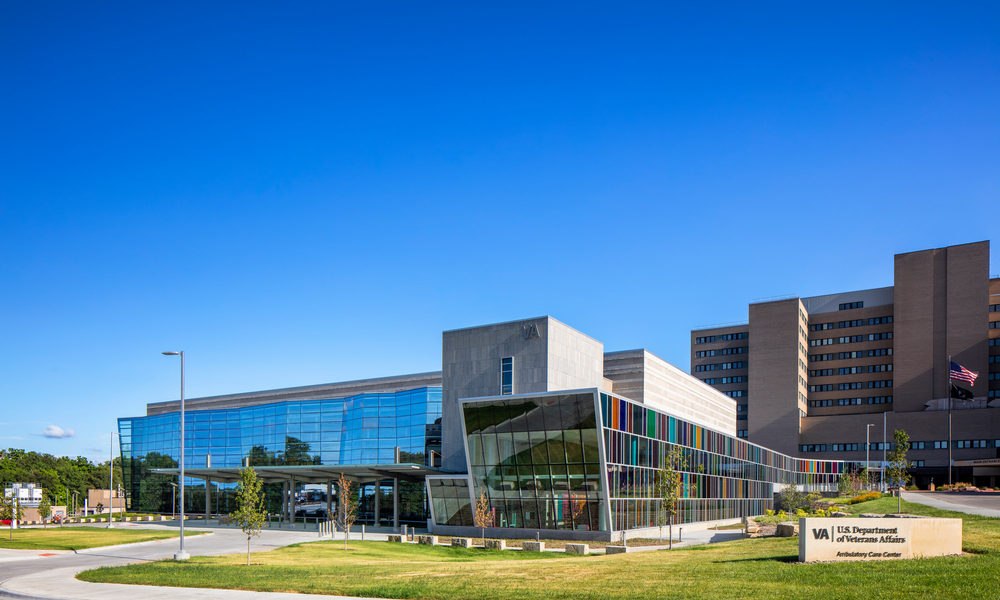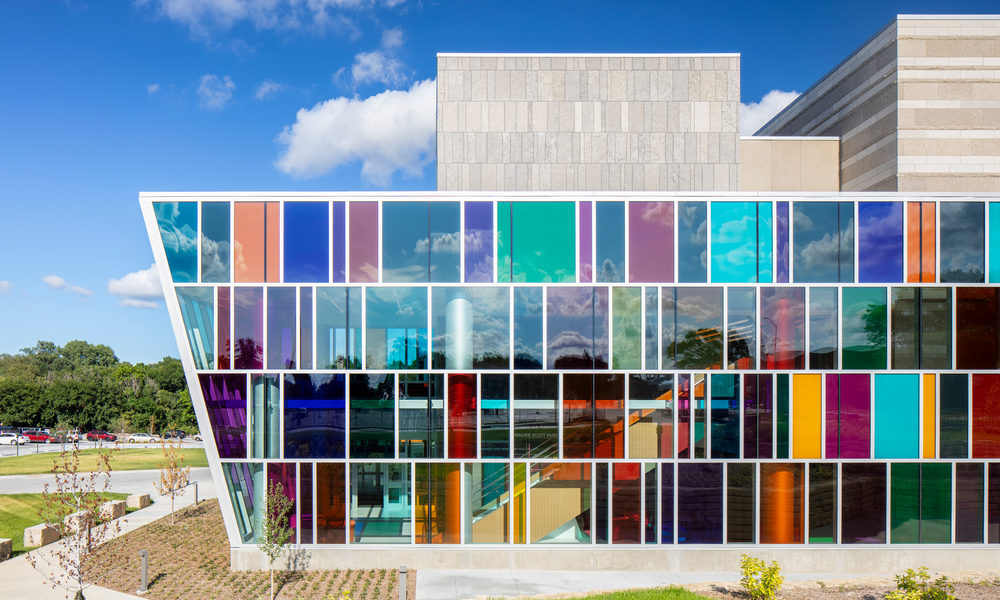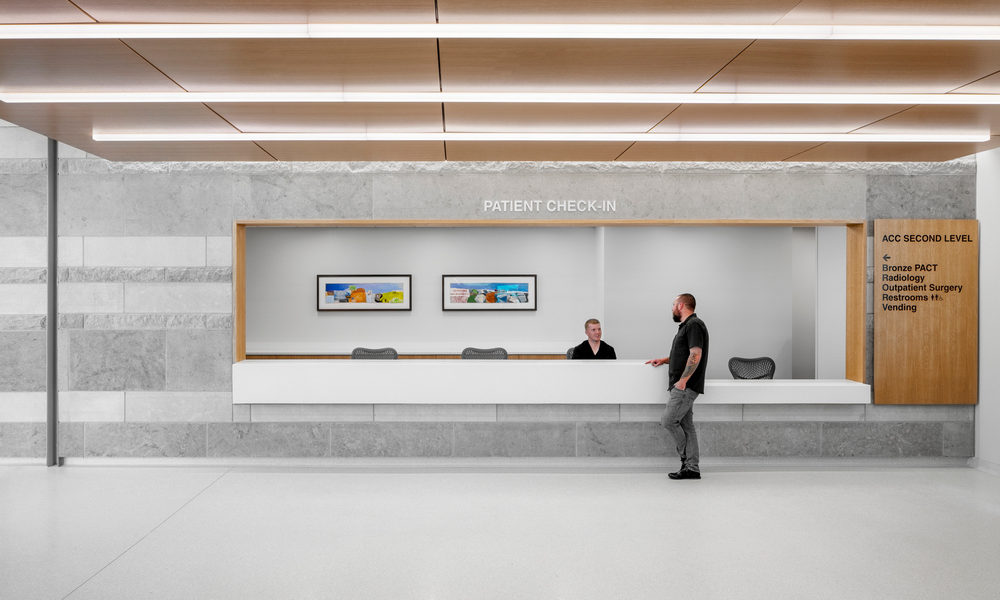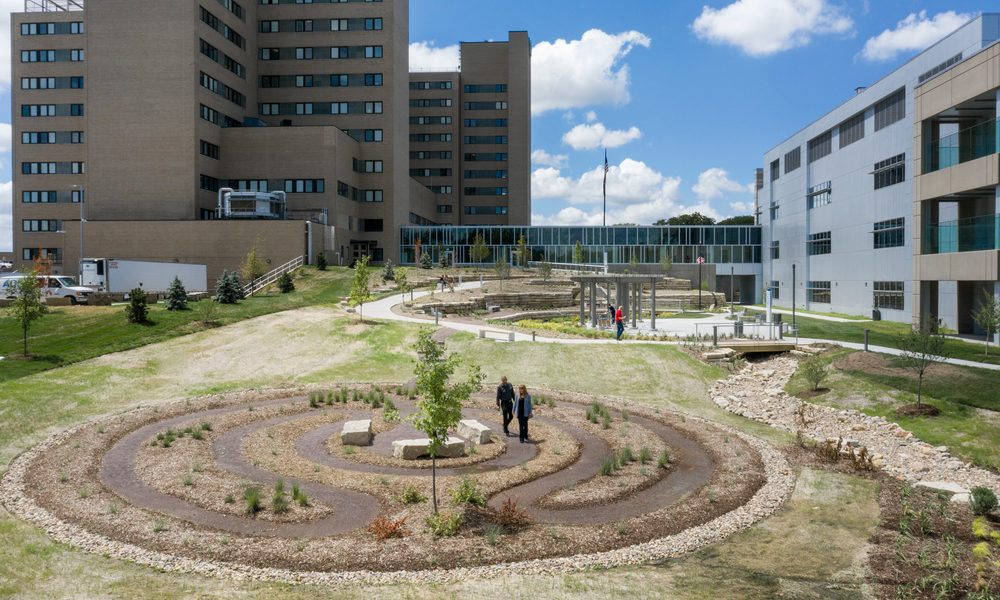Subscribe Now
Omaha VA Ambulatory Care Center Design Represents Freedom, Sacrifice + Honor
Construction of the $86-million Omaha VA Ambulatory Care Center, a 157,000-square-foot, three-story, outpatient facility for veterans, has recently been completed. With nearly 40,000 veterans being treated in Omaha, Nebraska annually, the new facility includes seven primary care units, an outpatient surgery suite and a specialty medicine unit allowing 400 additional outpatients to visit the clinic each day, as well as a dedicated women’s health clinic area. The project team included McCarthy Building Companies and Leo A Daly.
Located on the VA Medical Center campus, the new facility links to the existing 12-story hospital via a connecting corridor. The existing hospital, which opened in 1950, continues to be used for inpatient hospital stays, as well as administrative offices and medical services.
McCarthy’s approach included innovative construction delivery methods, such as subsurface utility mapping, virtual design and construction and other advanced technology, as well as using a design-assist subcontracting approach instead of a hard-bid approach, that enabled the complex project to not only meet its budget, but also to be completed more than four months ahead of schedule.
Project challenges included a tight timeline, maintaining ongoing communications with multiple partners and stakeholders, upholding VA construction standards, building on challenging topography and avoiding interruption of services adjacent to the fully operational hospital.
Advanced virtual design and construction technology applications throughout the process facilitated collaboration and enabled the team to maximize budget and schedule efficiencies. Building Information Modeling was used to continuously review and compare design updates and adjust the cost model accordingly. Conceptual cost modeling aligned the project’s budget and program early in the design. Laser scanning confirmed as-built conditions with 3D coordination to not only increase layout precision, but also ensure project controls for scopes such as self-perform concrete.
The facility’s design promotes patient-centered environments throughout to focus on the relationship between the physical environment and the patients’ overall experience, creating a healing environment that integrates spaces of escape and refuge, positive distractions, access to views and nature and abundance of natural daylight.
Most prominent is the north façade, representing freedom and sacrifice, featuring a 12,000-square-foot folded glass curtainwall (over 50 feet high and 235 feet at its widest) designed to resemble an American flag rippling in the wind. Around the corner, the western façade, representing honor, is lined with 9,000 square feet of differently hued glass panes that evoke ribbon bars awarded to service members.
Building the folded glass curtainwall that changes planes multiple times was particularly challenging. In addition to being a one-of-a-kind build, the design, fabrication and construction also were custom processes, requiring special engineering to meet structural, blast and energy code requirements.
Tags: (BIM) Building Information Modeling, ambulatory care center, Construction
Posted August 18, 2020
More Articles:
- CxA Workshop & Exam
Apr 29, 2024 – Apr 30, 2024 - EMP Seminar & Exam at CxEnergy 2024
Apr 29, 2024 – Apr 30, 2024 - CxEnergy
Apr 29, 2024 – May 2, 2024 - PHCC West 2024
Apr 29, 2024 – May 2, 2024 - Lean in Design Forum 2024
May 1, 2024 – May 2, 2024 - IFMA’s Facility Fusion Conference & Expo
May 5, 2024 – May 7, 2024 - ASHE Academy 2024
May 6, 2024 – May 10, 2024


